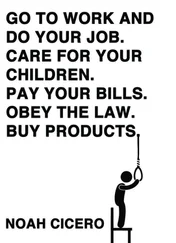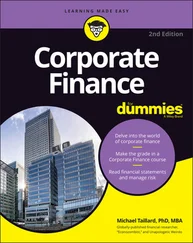3 Cognitive dissonance can cause investors to get caught up in herds of behavior; that is, people avoid information that counters an earlier decision (cognitive dissonance) until so much counter information is released that investors herd together and cause a deluge of behavior that is counter to that decision.
4 Cognitive dissonance can cause investors to believe “it's different this time.” People who purchased high-flying, hugely overvalued growth stocks in the late 1990s ignored evidence that there were no excess returns from purchasing the most expensive stocks available. In fact, many of the most high-flying companies are now far below their peaks in price.
Am I Subject to Cognitive Dissonance Bias?
This test begins with a scenario that illustrates some criteria that can determine susceptibility to cognitive dissonance.
Cognitive Dissonance Bias Test
Scenario: Suppose that you recently bought a new car, Brand A, Model B. You are very pleased with your purchase. One day, your neighbor finds you in your driveway washing your new car and comments on your new purchase: “Wow, love the new car. I know this model. Did you know that Brand Y, Model Z (Model Z is nearly identical to Model B), was giving away a free navigation system when you bought the car?”
You are initially confused. You were unaware, until now, that Model Z was including a navigation system with purchase of the car. You would have liked to have it. Perhaps, you wonder, was getting Model B a bad decision? You begin to second-guess yourself. After your neighbor leaves, you return to your house.
Question:Your next action is, most likely, which of the following?
1 You immediately head to your home office and page through the various consumer magazines to determine whether you should have purchased Model B.
2 You proceed with washing the car and think, “If I had it to do all over again, I may have purchased Model Z. Even though mine doesn't have a navigation system, I'm still pleased with Model B.”
3 You contemplate doing some additional research on Model Z. However, you decide not to follow through on the idea. The car was a big, important purchase, and you've been so happy with it—the prospect of discovering an error in your purchase leaves you feeling uneasy. Better to just put this thought to rest and continue to enjoy the car.
Answering “c” may indicate a propensity for cognitive dissonance. The next section gives advice on coping with this bias. Does this make sense?
The investment advice presented here is primarily preventative. People who can recognize cognitive dissonance in action and prevent it from causing mistakes become much better investors. Specifically, there are three common responses to cognitive dissonance that have potentially negative implications for personal finance and, consequently, should be avoided:
1 modifying beliefs,
2 modifying actions, and
3 modifying perceptions of relevant action(s).
1 Modifying beliefs. Perhaps the easiest way to resolve dissonance between actions and beliefs is simply to alter the relevant beliefs. When the principle in question is important to you, however, such a course of action becomes unlikely. People's most basic beliefs tend to remain stable; they don't just go around modifying their fundamental moral matrices on a day-to-day basis.Investors, however, do sometimes opt for this path of least resistance when attempting to eliminate dissonance (although the belief-modification mechanism is the least common, in finance, of the three coping tactics discussed here). For example, if the behavior in question was “selling a losing investment” that has little chance of recovering one might concoct a rationale along the lines of “it is okay not to sell a losing investment” in order to resolve cognitive dissonance and permit yourself to hold onto a stock. This behavior, obviously, may pose hazards to your wealth. Taking a tax loss and moving on is typically the best course of action in this scenario.
2 Modifying actions. On realizing that you have engaged in behavior contradictory to some preexisting belief, you might attempt to instill fear and anxiety into your decision in order to averse-condition yourself against committing the same act in the future. However, averse conditioning is often a poor mechanism for learning, especially if you can train yourself, over time, to simply tolerate the distressful consequences associated with a “forbidden” behavior.Investors may successfully leverage averse conditioning. For example, in the instance wherein a losing investment must be sold, an individual could summon such anxiety at the prospect of actually losing money. Again, taking a tax loss and moving on is a good solution. Even the best investors take losses and move on.
3 Modifying perceptions of relevant action(s). A more difficult approach to reconciling cognitive dissonance is to rationalize whatever action has brought you into conflict with your beliefs. For example, you may decide that while hitting a dog is generally a bad idea, the dog whom you hit was not behaving well; therefore, you haven't done anything wrong. People relying on this technique try to recontextualize whatever action has generated the current state of mental discomfort so that the action no longer appears to be inconsistent with any particular belief.An investor might rationalize retaining a losing investment: “I don't really need the money right now, so I won't sell” is a justification that might resolve cognitive dissonance. This type of rationalization often leads to sub-optimal investment results.
1 1James Montier, Behavioural Finance: Insights into Irrational Minds and Markets (West Sussex, England: John Wiley & Sons, 2002).
4 Belief Perseverance Bias #2: Conservatism Bias
To invest successfully over a lifetime does not require a stratospheric IQ, unusual business insight, or inside information. What's needed is a sound intellectual framework for decisions and the ability to keep emotions from corroding that framework .
— Warren Buffett
Bias Name:Conservatism
Bias Type:Cognitive
Subtype:Belief perseverance
Conservatism bias is a mental process in which people cling to their prior views or forecasts at the expense of acknowledging new information. For example, suppose that an investor receives some bad news regarding a company's earnings and that this news negatively contradicts another earnings estimate issued the previous month. Conservatism bias may cause the investor to underreact to the new information, maintaining impressions derived from the previous estimate rather than acting on the updated information investors persevere in a previously held belief rather than acknowledging new information; this is again a variation on the cognitive dissonance theme described in the last section.
Example of Conservatism Bias
James Montier is author of the book Behavioural Finance: Insights into Irrational Minds and Markets 1 and an analyst for DKW in London. Montier has done some exceptional work in the behavioral finance field. Although Montier primarily studied the stock market in general, concentrating on the behavior of securities analysts in particular, the concepts presented here can and will be applied to individual investors later on.
Commenting on conservatism as it relates to the securities markets in general, Montier noted: “The stock market has a tendency to underreact to fundamental information—be it dividend omissions, initiations, or an earnings report. For instance, in the United States, in the 60 days following an earnings announcement, stocks with the biggest positive earnings surprise tend to outperform the market by 2 percent, even after a 4 to 5 percent outperformance in the 60 days prior to the announcement.”
Читать дальше












